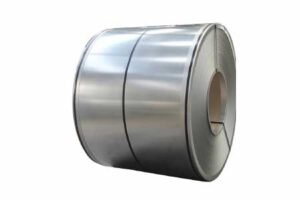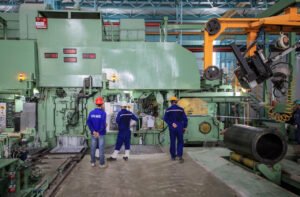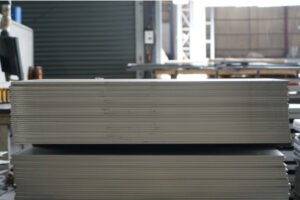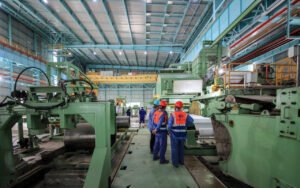Stainless Steel Coil Strip: More Than Just a Material

Sourcing consistent, high-quality stainless steel coil strip can be a persistent challenge, often leading to production delays and final product defects. These supply chain inconsistencies directly threaten your project timelines and budget, undermining your competitive edge. At MFY, we solve this by providing reliable, top-tier coil strips.
A stainless steel coil strip is a semi-finished product created by rolling a steel slab, serving as a critical raw material for global industries. Valued for its exceptional corrosion resistance, durability, and formability, it is fundamental to the automotive, construction, manufacturing, and medical sectors worldwide.
This unassuming roll of metal is, in fact, the lifeblood of modern manufacturing and construction. Its journey from a massive, red-hot slab to a precision-engineered component in a car or a skyscraper is a testament to industrial innovation. But its story is also one of complex challenges and continuous evolution. I invite you to explore this journey with me, as we uncover its rich history, demanding applications, and the future it promises.
Understanding the stainless steel coil strip is to understand the balance between cost and quality, a dilemma I see our clients grapple with daily. It's not a mere commodity; its metallurgical properties dictate the safety, longevity, and performance of the final product. A minor imperfection in a coil can escalate into a critical failure in a high-pressure pipe or a structural beam. Data from the manufacturing sector1 often highlights that a significant percentage of component failures can be traced back to substandard raw materials. This underscores the importance of a transparent and quality-obsessed supply chain, which is the core principle we've built MFY upon.
What is the historical background of stainless steel coil strip in the industry?
Wondering how stainless steel evolved from a niche discovery into the industrial cornerstone it is today? Its history is frequently overlooked, leaving its true value and the innovation behind it unappreciated. This oversight can lead to outdated material choices, missing out on decades of progress.
The history of stainless steel coil strip began with the discovery of rust-proof alloys in the early 20th century. Its industrial-scale adoption soared after World War II, driven by continuous casting and rolling technologies that enabled mass production and revolutionized manufacturing, construction, and consumer goods industries.
The journey from Harry Brearley’s accidental discovery in 1913 to the massive coils we ship from MFY’s facilities today is a fascinating story of industrial transformation. Initially, stainless steel was a precious, almost boutique material, reserved for cutlery and specialty items. The true revolution, however, was not just in the alloy's chemistry but in the mechanics of its production. I often share stories with my younger colleagues about the industry veterans I learned from, who witnessed the monumental shift from processing individual, cumbersome steel sheets to the fluid efficiency of continuous coil rolling. This wasn't merely an upgrade in speed; it was a fundamental change that unlocked the potential for automation and mass production. It enabled industries, from automotive to appliance manufacturing, to design and build in ways that were previously unimaginable. For one of our long-standing clients in the pipe manufacturing sector, this shift meant they could create longer, more uniform pipes with fewer welds, dramatically increasing the integrity and safety of their products. This spirit of transformative progress is what we carry forward at MFY, integrating digital innovation to ensure the next chapter in the history of steel is even more remarkable.
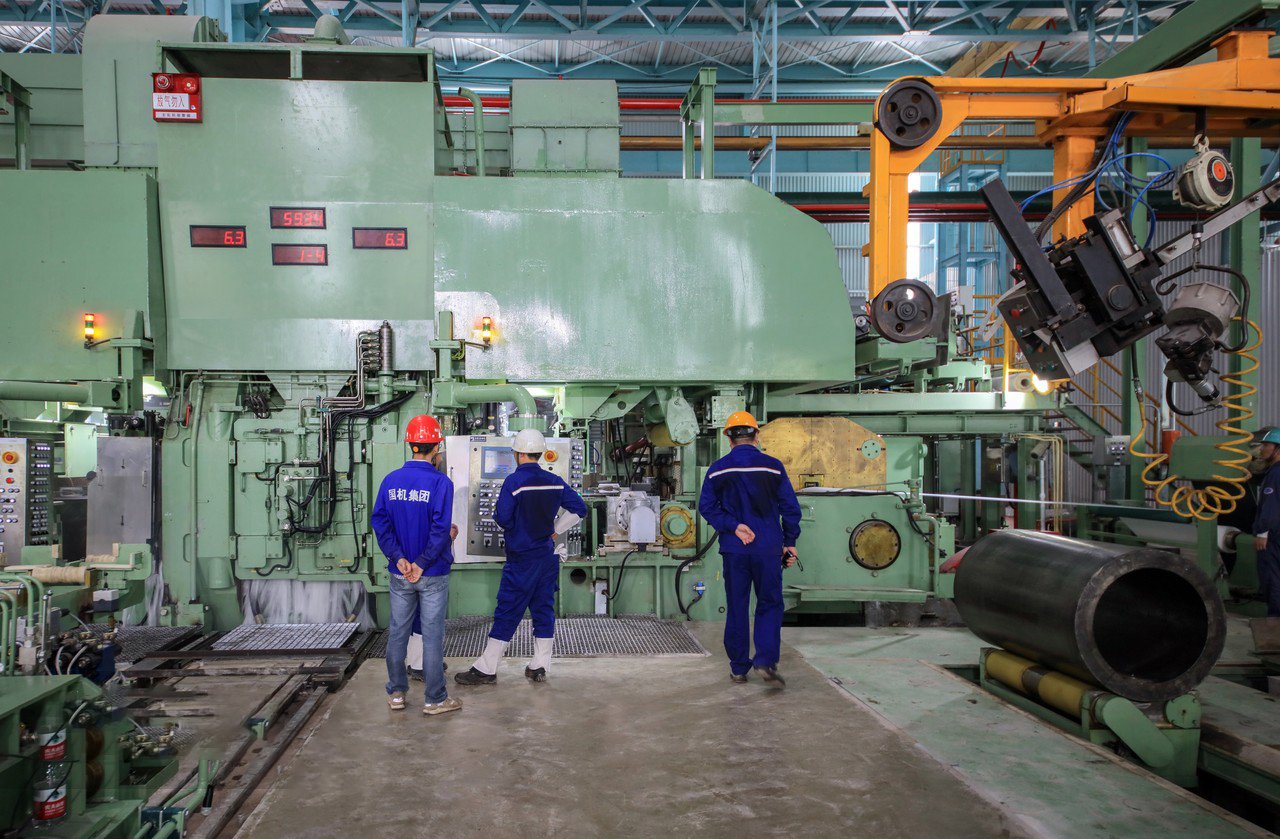
The story of stainless steel coil strip is inextricably linked with the broader narrative of 20th-century industrial progress. To appreciate its current role, we must examine the key phases of its development, from a laboratory curiosity to a global commodity. This evolution was not a single event but a series of interconnected breakthroughs in metallurgy, engineering, and manufacturing philosophy. It’s a history that informs our strategies at MFY every single day as we navigate the complexities of the global steel market. Understanding where the industry has been is crucial to charting its future course and helping our clients make the most informed decisions for their projects.
The Genesis of an Industrial Titan: Early Innovations
The birth of stainless steel is often credited to Harry Brearley in Sheffield, England, in 1913, who, while researching erosion-resistant gun barrels, noticed a particular steel alloy did not rust. This discovery of what we now know as martensitic stainless steel quickly found its first commercial application in cutlery, replacing materials prone to corrosion. However, the initial production processes were laborious and expensive. Steel was produced in small batches, cast into ingots, and then painstakingly worked into sheets. This limited its use to high-value, small-scale items, far from the industrial staple it is today.
During the interwar period, the unique properties of stainless steel began to attract the attention of emerging industries. The food processing, chemical, and medical fields were desperate for materials that were not only strong but also inert and resistant to corrosion from acids and sterilizing agents. This demand spurred further metallurgical research, leading to the development of new alloys, like the austenitic grades (such as the famous 18/8, or Grade 304), which offered even better corrosion resistance and were easier to form and weld. Yet, the high cost and inefficient production methods remained a significant barrier to widespread adoption, confining it to specialized applications where its performance justified the premium price.
I remember a story from an old mentor about a dairy cooperative in the 1930s that invested a fortune in stainless steel vats. It was a massive capital expenditure, but it revolutionized their operations by improving hygiene and reducing product spoilage. This early case illustrates the fundamental value proposition of stainless steel that still holds true: a higher initial investment for unparalleled long-term performance and safety. It was these pioneering applications that laid the groundwork and demonstrated the immense potential waiting to be unlocked by more efficient production technology.
The Post-War Boom and the Rise of Continuous Processing
The Second World War acted as a powerful catalyst for metallurgical advancement. The urgent need for high-performance materials in aerospace and military applications accelerated research and development at an unprecedented rate. Following the war, these innovations began to filter into civilian industries, coinciding with a global economic boom and a surge in consumer demand. This was the perfect environment for stainless steel to make its leap into the mainstream, but it required a technological breakthrough to make it economically viable.
That breakthrough was the perfection and widespread implementation of the continuous hot-strip rolling mill in the 1950s and 1960s. Instead of handling individual slabs, these massive facilities could process a continuous ribbon of steel, drastically increasing efficiency and improving the material's consistency. This was quickly followed by the development of cold-rolling techniques, which allowed for tighter tolerances and a wider variety of surface finishes. The impact was staggering; global stainless steel production grew exponentially, from less than one million metric tons in 1950 to over five million by the early 1970s. The coil strip was born, and with it, the modern era of metal fabrication.
A perfect example of this transformation can be seen in the kitchenware industry. A cookware client of ours, whose business was founded in the 1960s, recounted how they switched from buying small, expensive sheets to purchasing full coils of stainless steel. This single change allowed them to automate their stamping and deep-drawing processes, slashing production time by over 50% and significantly reducing material waste. This efficiency gain was what enabled them to bring affordable, high-quality stainless steel pots and pans to the mass market, fundamentally changing the modern kitchen.
Globalization and the Modern Supply Chain
The late 20th and early 21st centuries saw another profound shift: the globalization of manufacturing and the rise of Asia, particularly China, as the world's steel production powerhouse. This new era democratized access to stainless steel, making it more affordable and available than ever before. However, it also introduced unprecedented complexity into the supply chain. Navigating this new landscape requires more than just manufacturing prowess; it demands logistical expertise, market intelligence, and a deep understanding of global trade dynamics.
This is the environment in which MFY was forged. We recognized early on that our role couldn't just be as a producer. We had to become a fully integrated supply chain partner for our clients. For instance, we recently worked with a large engineering firm in India on a major infrastructure project. They needed multiple grades of stainless steel coil and pipe for different applications within the same project—Grade 304 for general structural use and Grade 316L for sections exposed to corrosive industrial emissions. Our ability to source, process, and consolidate these different products into a single, streamlined delivery saved them from the logistical nightmare of coordinating with multiple suppliers, ensuring their project stayed on schedule and on budget.
This evolution from a simple producer to a supply chain integrator is the defining feature of the modern steel industry. The focus is no longer just on the product itself but on the entire value chain, from raw material sourcing to final delivery.
| Feature | Batch Production (Pre-1950s) | Continuous Rolling (Post-1950s) | Modern Integrated Production (21st Century) |
|---|---|---|---|
| Efficiency | Low | High | Very High (Digitally Optimized) |
| Cost per Unit | Very High | Moderate | Low to Moderate |
| Consistency | Poor to Fair | Good | Excellent |
| Application | Niche, high-value | Mass-market, industrial | Diverse, specialized, global |
By understanding this rich history, from a Sheffield lab to our globally connected digital platform, we are better equipped to tackle today's challenges. We appreciate that the coil of steel we deliver is not just a product but the culmination of over a century of innovation, and we carry the responsibility of that legacy in every transaction.
Stainless steel resists corrosionTrue
Stainless steel's chromium content forms a passive layer that prevents rusting, making it ideal for harsh environments.
Stainless steel was mass-produced in 1900sFalse
Mass production only became viable post-WWII with continuous rolling technology; early 20th-century production was small-scale and expensive.
How is stainless steel coil strip currently utilized in various applications?
Many professionals perceive stainless steel as a single, uniform material, failing to recognize the vast spectrum of applications it empowers across diverse industries. This narrow perspective can lead to missed opportunities and suboptimal material choices where a specific grade could offer superior performance and value.
Stainless steel coil strips are indispensable across numerous sectors. In the automotive industry, they form exhaust systems and structural parts. In construction, they are used for cladding and fixtures. For consumer goods, they are essential for appliances, and in medicine, for surgical instruments.
The true brilliance of stainless steel lies not in a single quality, but in its profound adaptability. It is not a one-size-fits-all solution; it is a family of alloys, each engineered for a specific purpose. I was recently in a meeting with an engineering, procurement, and construction (EPC) contractor in the Middle East, planning a new desalination plant. They were initially specifying a standard grade for all piping. When we discussed the specific saline concentrations and operating temperatures, we identified that a duplex stainless steel would provide a 30-year service life, compared to the 10-15 years of their initial choice. This is the kind of granular, application-specific knowledge that transforms a project. This versatility is often hidden from the end-user but is the daily language of engineers, designers, and manufacturers. At MFY, we see our primary role as being translators and partners in this process. We work to bridge the knowledge gap, guiding clients from a general need to a precise material specification that optimizes performance, safety, and cost-effectiveness for their unique context. The journey of a single coil can end in a thousand different applications, and our expertise lies in understanding every one of those potential destinations.
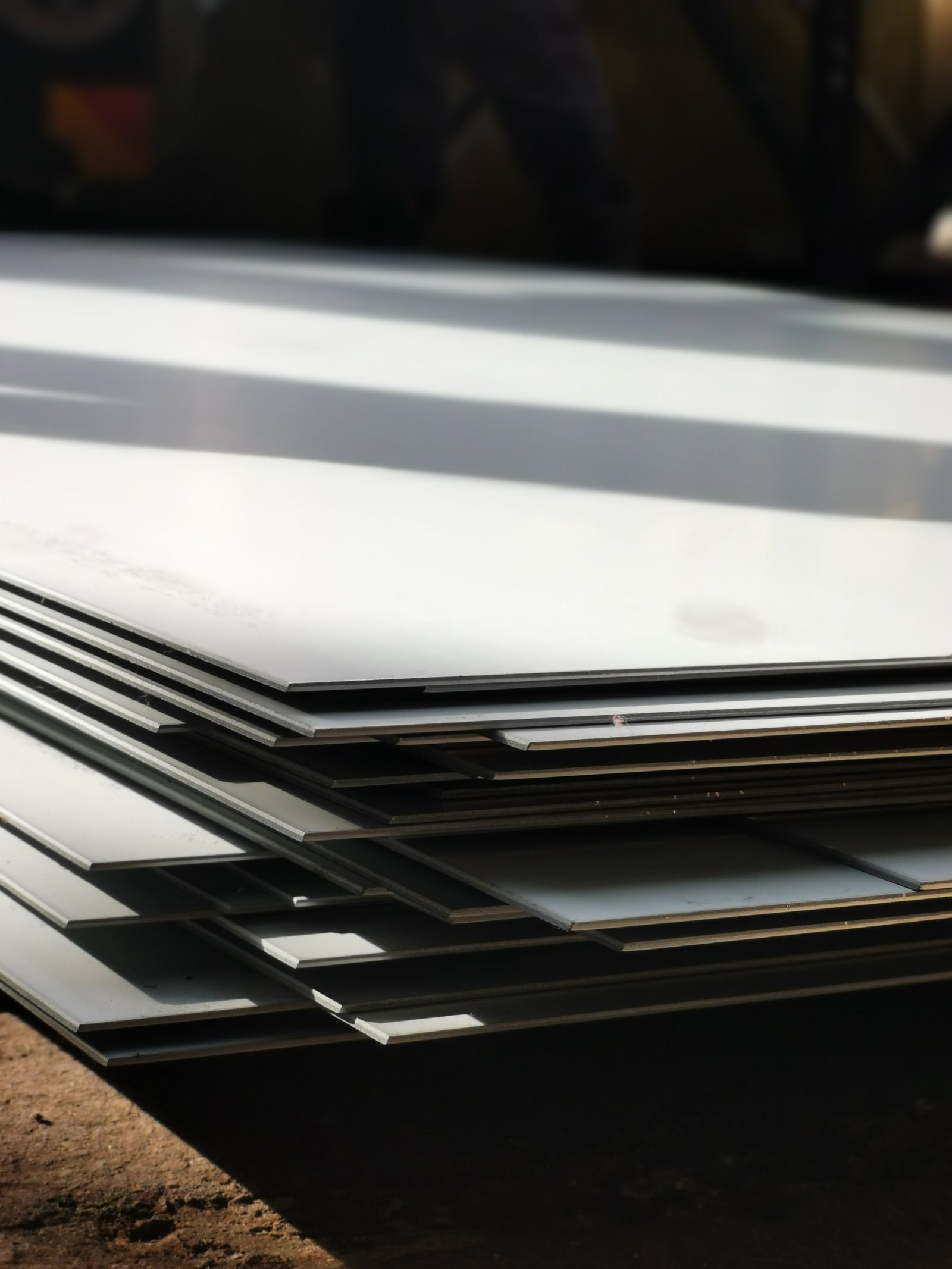
The application range of stainless steel coil strip is a direct reflection of the material's diverse properties. Different grades offer unique combinations of strength, corrosion resistance, heat resistance, and formability. As a global supplier, we have a front-row seat to this incredible versatility. We see our coils transformed into everything from the gleaming façade of a skyscraper to the life-saving precision of a surgical scalpel. Analyzing these applications2 reveals the specific challenges that stainless steel is called upon to solve and highlights the critical importance of matching the right grade to the right job. This deep dive into its uses is essential for any stakeholder in the manufacturing or construction industries.
The Engine of Mobility: Automotive and Transportation
The automotive industry is one of the largest consumers of stainless steel coil strip, and for good reason. Modern vehicles operate in harsh environments, demanding materials that can withstand extreme heat, corrosive road salts, and constant vibration. In exhaust systems, for example, ferritic grades like 409 and 439 are the industry standard. They provide excellent resistance to hot exhaust gases at a competitive cost, a critical factor in this high-volume industry. Over 25 kg of stainless steel can be found in the exhaust system of a typical passenger car, a testament to its indispensable role.
Beyond the exhaust, stainless steel is playing a growing role in vehicle safety and lightweighting. Advanced high-strength stainless steels (AHSS), including austenitic and duplex grades, are increasingly used for structural components like bumper beams and door reinforcements. These materials can absorb significant impact energy, improving crash safety while allowing for thinner, lighter parts. As the industry pivots towards electric vehicles (EVs), the need for lightweight, strong, and corrosion-resistant materials to protect battery enclosures makes stainless steel an even more critical component for the future of mobility.
We work closely with a Tier-1 automotive supplier in Russia that faced recurring warranty claims due to premature corrosion failures in their exhaust components. The issue was traced back to inconsistent material quality from their previous supplier. After a detailed analysis of their manufacturing process and performance requirements, we transitioned them to our certified Grade 439 coil strips. The result was a complete elimination of corrosion-related warranty claims and a 15% improvement in their production line's uptime, thanks to the material's uniform mechanical properties, which allowed for faster and more predictable stamping and welding operations.
Building the Future: Architecture, Engineering, and Construction (AEC)
In the world of construction, stainless steel provides a unique combination of strength, longevity, and aesthetic appeal. For exterior applications like façade cladding, roofing, and structural elements, its performance is unmatched. I’ve walked through Dubai and seen firsthand how Grade 316 stainless steel, with its added molybdenum, withstands the corrosive coastal air, maintaining its appearance for decades where lesser materials would fail in a few years. Iconic structures like the Chrysler Building’s spire3 and The Peak Tower in Hong Kong rely on stainless steel to achieve their timeless, durable designs.
Internally, stainless steel is just as vital. From elevator panels and escalators to handrails and kitchen fixtures, it offers a clean, modern aesthetic that is also incredibly durable and easy to maintain. In environments where hygiene is paramount, such as hospitals and food preparation areas, stainless steel is the default choice. Its non-porous surface resists bacterial growth and can withstand aggressive cleaning agents without degrading. Grade 304 is the workhorse in this space, offering a perfect balance of performance and cost for thousands of interior applications.
I recall a major hospital project we supplied in Southeast Asia. The client’s primary concern was infection control and long-term durability. They needed vast quantities of stainless steel for wall protection panels, handrails, and surfaces in operating rooms. We collaborated with their architects to specify not just the right grade (304L for better weldability in fabricated components) but also a specific brushed finish. This finish was chosen because studies have shown it can be more easily and effectively sanitized than highly polished surfaces, thus directly contributing to the facility’s patient safety protocols. It’s a detail that highlights how material specification goes far beyond simple corrosion resistance.
The Heart of the Home and Industry: Consumer and Industrial Goods
Look around your home, and you will find stainless steel coil strip in dozens of forms. It is the material of choice for the drums in washing machines and dishwashers4, the interior of microwaves, and the doors of refrigerators. In these applications, formability, hygiene, and resistance to detergents and food acids are the key drivers. The ability to be deep-drawn into complex shapes like kitchen sinks or stamped into intricate patterns makes it a favorite among designers and manufacturers of consumer goods.
In an industrial context, the demands are even more stringent. In food and beverage processing, chemical plants, and pharmaceutical manufacturing, stainless steel is the only choice for tanks, piping, and processing equipment. Its non-reactive nature ensures that it does not contaminate the product, a critical requirement for regulatory compliance. Specialized grades are used to handle everything from highly acidic solutions to high-purity water. The global market for food processing equipment, which relies heavily on stainless steel, is projected to grow significantly, driven by rising standards for food safety and hygiene worldwide.
The diversity of applications requires a nuanced approach to material selection, a process we guide our clients through every day. The choice is not just between Grade 304 and 316 but involves a whole family of alloys designed for specific challenges.
| Application | Common Grade | Key Requirement | Reason for Choice |
|---|---|---|---|
| Automotive Exhaust | 409/439 (Ferritic) | High-Temp Corrosion | Cost-effective resistance to hot exhaust gases |
| Coastal Architecture | 316 (Austenitic) | Pitting Corrosion Resistance | Molybdenum content resists chloride attack |
| Kitchen Sink | 304 (Austenitic) | Formability & Corrosion | Good all-around performance and aesthetics |
| Chemical Tank | 316L/Duplex | High Corrosion Resistance | Resists aggressive chemicals; "L" for weldability |
This spectrum of use cases proves that stainless steel coil strip is not a single entity but a versatile platform for innovation. As a supplier, our expertise is not just in producing the coil itself, but in deeply understanding these end-use scenarios to ensure our clients receive a solution that is not only effective but also provides the best possible long-term value.
Stainless steel is used in automotive exhaust systemsTrue
Ferritic grades like 409/439 are industry standards for exhaust systems due to their heat and corrosion resistance.
All stainless steel grades are interchangeableFalse
Different grades have unique properties (corrosion resistance, strength, etc.) tailored for specific applications.
What are the key challenges faced in the production of stainless steel coil strip?
Producing high-quality stainless steel coil strip is fraught with complexities, from maintaining strict chemical compositions to achieving perfect surface finishes. These hidden challenges in the production process can directly impact material performance, leading to costly failures and project delays for the end-user.
Key challenges in producing stainless steel coil strip include ensuring precise metallurgical control of the alloy composition, managing extreme price volatility of raw materials like nickel volatility impact on stainless steel prices, achieving consistent mechanical properties and thickness tolerances across the entire coil, and preventing surface defects during rolling and finishing.
When a client receives a perfect coil of stainless steel, it looks simple and uniform. However, achieving that simplicity is an incredibly complex undertaking. From my vantage point as a director, I see the daily tightrope walk our production teams perform. They are balancing the science of metallurgy with the immense mechanical forces of the rolling mills. A slight deviation in furnace temperature, a minute impurity in the raw materials, or an infinitesimal variation in roller pressure can have cascading effects, potentially rendering an entire coil useless for a high-specification application. I once had to explain to a client in the precision engineering sector why a particular coil, despite being within standard tolerance, wasn't suitable for their process. Their laser cutting operation required a level of flatness that exceeded the norm, a detail that highlights the nuanced challenges we face. It's a constant battle against variables—market price fluctuations for nickel and chromium, the physical stresses on the machinery, and the ever-increasing quality demands of our customers. Production challenges in laser cutting stainless steel5 These are the invisible challenges embedded in every meter of steel we produce, and overcoming them is the measure of our expertise.
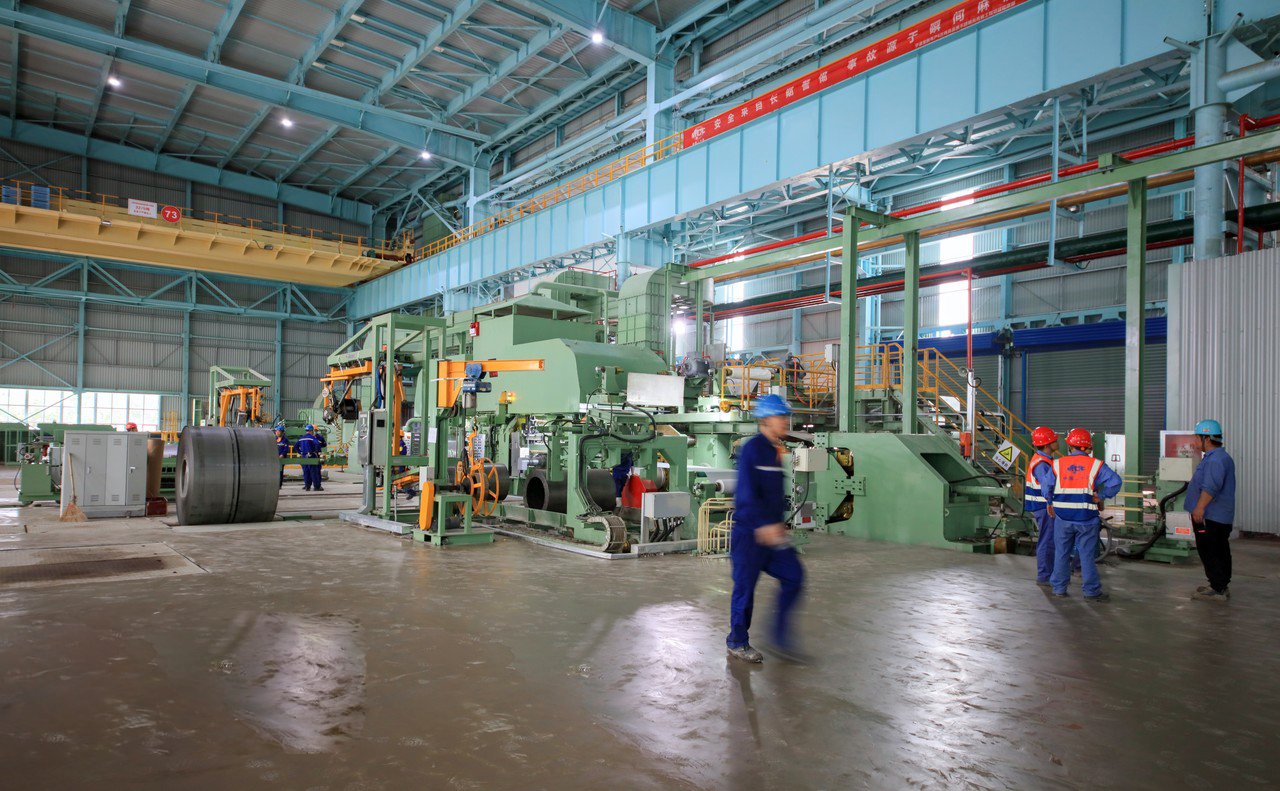
The production of stainless steel coil strip is a sophisticated industrial process where precision is paramount. While the end product may appear robust and straightforward, its creation is a delicate dance of chemistry, physics, and mechanical engineering. The challenges are multi-faceted, spanning from the initial sourcing of raw materials to the final coiling and shipping. At MFY, we have built our entire operational philosophy around mastering these challenges, because we know that our clients' success depends on the flawless execution of these critical steps. A deep understanding of these production hurdles is essential for any buyer or user of stainless steel, as it illuminates the factors that truly differentiate a high-quality supplier.
The Crucible of Quality: Metallurgical and Chemical Precision
The entire performance of a stainless steel product begins in the furnace. Achieving the precise chemical composition for a specific grade is the first and most critical challenge. The core elements—iron, chromium, and often nickel—must be combined with other alloying elements like molybdenum, manganese, or nitrogen in exact proportions. A minute deviation, even a few hundredths of a percent, can drastically alter the material's properties, affecting its corrosion resistance, strength, and weldability. For example, in Grade 316L, keeping the carbon content below 0.03% is crucial to prevent carbide precipitation during welding, which can lead to intergranular corrosion and catastrophic failure in a chemical processing environment.
This chemical balancing act is complicated by the quality of the raw materials themselves. Scrap steel, a key ingredient, can introduce unwanted tramp elements that must be identified and neutralized. The process requires continuous, real-time analysis using advanced spectrometry, followed by precise additions of expensive alloys to guide the molten steel to its target composition. This requires not only advanced technology but also a highly experienced team of metallurgists and furnace operators.
I personally reviewed a case where a batch of what was supposed to be Grade 304 steel showed unexpected magnetic properties. Our investigation traced the issue back to a slight imbalance in the nickel content, which had caused the formation of some ferrite in the austenitic matrix. While the material was still technically "stainless," it was unacceptable for the client's application in a non-magnetic sensor housing. This incident reinforced our commitment to rigorous, multi-stage chemical verification throughout the production process, ensuring the grade we certify is the grade we deliver, without exception.
The Tightrope of Tolerance: Mechanical and Dimensional Control
Once the chemistry is correct, the molten steel is cast into slabs and sent to the rolling mills. Here, a new set of challenges emerges: achieving precise dimensional and mechanical properties consistently over the entire length of a coil, which can be kilometers long. The hot-rolling process reduces the thick slab to a strip, after which cold-rolling further reduces its thickness and imparts the desired surface finish and mechanical strength. This process of "work hardening" must be carefully controlled.
Maintaining a uniform thickness, or gauge, across the width and length of the coil is incredibly difficult. It requires sophisticated sensors and hydraulic controls that constantly adjust the pressure of the massive rollers to compensate for temperature variations and other dynamic factors. Similarly, properties like tensile strength and hardness must be consistent to ensure the material behaves predictably in the customer's forming, stamping, or drawing processes. An inconsistent coil can cause tool breakage, production stoppages, and variations in the final product's dimensions.
We once had a client, a manufacturer of high-end kitchen sinks, who was experiencing a high rate of cracking during their deep-drawing process. They blamed the material. Our technical team visited their facility and, using a sample from the coil, found that while the average mechanical properties were within specification, there were slight inconsistencies along the coil's length. We worked with our rolling mill to implement an enhanced control algorithm that tightened the standard deviation of tensile strength. The result was a more uniform material that eliminated their cracking issue, demonstrating that for demanding applications, consistency is just as important as the average specification.
The Flawless Surface: Preventing and Managing Defects
The final major challenge lies in achieving and preserving a perfect surface finish. From the furnace to the final packaging, the steel strip is vulnerable to a host of potential defects. Scratches, roll marks, pits, and stains can all render a product unacceptable, particularly for architectural or consumer-facing applications where aesthetics are paramount. These defects can be caused by impurities in the molten steel, issues with the casting process, debris on the rollers, or improper handling during coiling and transport.
Preventing these defects requires meticulous housekeeping within the production facility and a robust quality control system. This includes advanced surface inspection systems that use cameras and laser scanners to detect flaws in real time as the strip moves at high speed. The choice of rolling lubricants, the grinding and maintenance of the work rolls, and the tension of the coiler all play a critical role in producing a blemish-free surface.
We provide a significant amount of bright annealed (BA) finished coils to the appliance market in Southeast Asia, where a mirror-like finish is essential. This requires an extra production step where the coil is annealed in a controlled atmosphere furnace to create a highly reflective surface. To illustrate the sensitivity of this process, even a small leak in the furnace seal, allowing oxygen to enter, can ruin the finish.
| Challenge Category | Specific Problem | Potential Impact on End-User | MFY's Mitigation Strategy |
|---|---|---|---|
| Metallurgical | Incorrect Alloy Composition | Reduced corrosion resistance, poor weldability | Advanced spectrometry, multi-stage verification |
| Mechanical | Inconsistent Thickness/Hardness | Production stoppages, tool breakage, part failure | Real-time sensor feedback, enhanced process control |
| Surface | Scratches, Pits, Stains | Poor aesthetics, rejection of final product | Automated surface inspection, meticulous process hygiene |
Ultimately, overcoming these production challenges is what defines a premium steel supplier. It is a continuous process of investment in technology, process refinement, and, most importantly, human expertise. It's a commitment to precision that ensures the simple-looking coil of steel our clients receive is, in fact, a highly engineered and reliable product.
Nickel content affects magnetismTrue
A slight nickel imbalance can cause ferrite formation in austenitic stainless steel, making it unexpectedly magnetic.
Scrap steel simplifies productionFalse
Scrap steel introduces tramp elements that require additional metallurgical control, complicating the production process.
What strategies can be employed to overcome the challenges in stainless steel coil strip manufacturing?
Facing volatile raw material prices, stringent quality demands, and complex logistics is the daily reality of steel manufacturing. These hurdles can seem insurmountable, directly threatening profitability and reliability. Ignoring them means falling behind in a fiercely competitive global market.
Strategies to overcome manufacturing challenges include implementing a vertically integrated supply chain for better cost and quality control, leveraging advanced process automation and AI-for-quality inspection, adopting agile production scheduling to respond to market shifts, and fostering deep technical partnerships with clients to align production with their specific needs.
In my years in the steel industry, I’ve seen that simply reacting to challenges is a recipe for failure. A proactive, strategic approach is the only way to thrive. The core of our philosophy at MFY is not just about making steel; it's about building a resilient and intelligent manufacturing ecosystem. This means looking beyond the factory floor and integrating everything from raw material procurement to final delivery into a single, cohesive strategy. I remember a time when a sudden spike in the nickel market sent shockwaves through the industry. While many of our competitors had to halt production or pass on massive price increases, our long-term sourcing agreements and risk management strategies6 allowed us to buffer our clients from the worst of the volatility. This is not luck; it's the result of deliberate strategic planning. It involves investing heavily in technology that provides real-time data, empowering our teams to make smarter, faster decisions. It’s about creating a system that is not just strong, but also agile and responsive to the unpredictable nature of the global market, ensuring we remain a stable partner for our clients.

Navigating the turbulent waters of stainless steel production requires more than just high-quality machinery; it demands a sophisticated and multi-pronged strategic framework. The challenges of metallurgical precision, cost volatility, and intense quality expectations cannot be solved by a single solution. Instead, a successful strategy weaves together supply chain integration, technological adoption, and a client-centric operational model. At MFY, we have built our competitive strength on these three pillars, transforming potential obstacles into opportunities to deliver greater value. This approach is not merely theoretical; it is a practical roadmap that has allowed us to provide the consistency and reliability our partners in manufacturing and construction depend on.
The Power of Integration: Building a Resilient Supply Chain
One of the most effective strategies to combat the challenges of price volatility and material consistency is vertical integration. By controlling multiple stages of the supply chain—from raw material trading and processing to finished product manufacturing and logistics—a company can create a powerful buffer against external market shocks. When the price of nickel or chromium fluctuates wildly on the London Metal Exchange, having direct sourcing contracts and in-house processing capabilities allows for more predictable costing and stable supply. This is a stark contrast to non-integrated producers who are entirely at the mercy of their suppliers and the spot market.
This integration extends beyond just cost management; it's a fundamental quality control strategy. When we oversee the entire process, from selecting the scrap and alloys to cold-rolling and finishing, we can ensure that quality standards are rigorously applied at every single step. There is no "black box" in our production chain where quality can be compromised. This provides a level of traceability and accountability that is simply not possible when sourcing semi-finished materials from multiple third-party suppliers.
For example, a major construction contractor in the Middle East approached us with a critical need for a large volume of stainless steel pipe for a time-sensitive project. Their previous supplier had failed to deliver due to a sudden raw material shortage. Because MFY’s business spans raw material trading, coil production, and tube manufacturing, we were able to internally allocate the necessary feedstock and prioritize their order through our mills. This integrated capability meant we could guarantee delivery within their tight deadline, effectively de-risking their project schedule in a way a simple trader or single-process mill could not.
The Digital Steel Mill: Leveraging Technology and Automation
The modern steel mill is no longer just a place of heat and force; it is a hub of data and intelligence. The most powerful strategy for overcoming the challenges of precision and consistency is the aggressive adoption of advanced technology. This begins with comprehensive process automation, where sensors monitor thousands of variables in real-time—from the chemical composition in the furnace to the temperature and tension in the rolling mill. This data feeds into control systems that make micro-adjustments far faster and more accurately than any human operator could.
The next frontier is the application of Artificial Intelligence (AI) and machine learning. At MFY, we are pioneering the use of AI-powered visual inspection systems that can detect and classify surface defects with over 99.5% accuracy, running 24/7 without fatigue. Furthermore, we are developing predictive maintenance models for our critical machinery. By analyzing vibration, temperature, and performance data, these models can predict potential equipment failures before they happen, allowing us to schedule maintenance proactively and avoid costly unplanned downtime.
A compelling case is our implementation of a "digital twin" for our cold-rolling process. We created a virtual model of the mill that simulates how different inputs (like incoming coil properties and machine settings) will affect the final product. Before processing a high-value coil for a demanding application, we can run simulations to optimize the rolling parameters. This has reduced our setup time, minimized the risk of producing out-of-spec material, and increased our yield of premium-quality coils by over 5%, directly improving both efficiency and product reliability.
The Collaborative Partnership: A Client-Centric Approach
Ultimately, steel is not produced in a vacuum. The most insightful strategy is to move beyond a transactional relationship with customers and build deep, collaborative partnerships. This means understanding not just what grade of steel a client is ordering, but why they are ordering it. What is their application? What are their manufacturing processes? What are their biggest challenges? Answering these questions allows us to tailor not just the product, in a proactive and consultative way.
This collaborative model involves our technical teams working directly with a client’s engineers to co-develop material specifications. It means providing logistical solutions that are integrated with their production schedules, such as just-in-time (JIT) delivery to minimize their inventory costs. It also means being transparent and sharing data to build trust and find mutual efficiencies.
| Strategic Pillar | Core Action | Benefit for MFY | Benefit for Client |
|---|---|---|---|
| Integration | Control of raw material to final product | Stable costs, predictable output | Reliable supply, price stability, traceability |
| Technology | AI-driven quality control, process automation | Higher efficiency, lower defects, less downtime | Superior/consistent quality, on-time delivery |
| Collaboration | Joint technical specification, JIT delivery | Deeper market insight, customer loyalty | Optimized material performance, lower inventory cost |
I recently spent a week at the facility of a large equipment integrator. By observing their welding and assembly processes, our team identified that a slight modification to the edge trim of our steel sheet could significantly reduce their preparation time. This small change, born from collaboration, saved them hours of labor each week. This is the ultimate strategy: embedding ourselves in our client’s success, transforming our role from a mere supplier to an indispensable partner in their value chain.
Vertical integration stabilizes supply chainsTrue
Controlling multiple supply chain stages buffers against market shocks and ensures quality traceability, as demonstrated by MFY's ability to fulfill urgent orders through internal allocation.
AI replaces human quality inspectorsFalse
While AI enhances defect detection (99.5% accuracy), it complements rather than replaces human oversight, particularly for complex judgment calls and process optimization.
What are the technological improvements suggested for stainless steel coil strip usage?
Relying on traditional steel grades and manufacturing methods means missing out on significant gains in efficiency, performance, and sustainability. In a rapidly advancing world, this stagnation can lead to outdated products and a loss of competitive advantage for users of stainless steel.
Suggested technological improvements include developing advanced high-strength and corrosion-resistant alloys, integrating smart sensors (IoT) into coils for supply chain traceability, utilizing AI-driven design software to optimize material usage, and adopting greener, more sustainable steel production methods to reduce environmental impact.
As someone who has built a career in the steel industry, I am convinced that our most exciting innovations are still ahead of us. The conversation is no longer just about making steel stronger or more corrosion-resistant in a general sense. The future lies in creating highly specialized, "intelligent" materials that are engineered for the specific demands of emerging technologies, from next-generation EVs to advanced medical devices. At MFY, our R&D is not just confined to our labs; it’s a dynamic process fueled by the challenges our clients bring to us. We are constantly asking: How can we make this lighter without sacrificing strength? How can we enhance its performance in an extreme environment? How can we make its entire lifecycle, from production to recycling, more sustainable? This forward-looking perspective is crucial. It’s about anticipating the needs of tomorrow's industries and developing the materials they will depend on, ensuring that the humble steel coil continues its evolution into a high-performance, technologically advanced product.
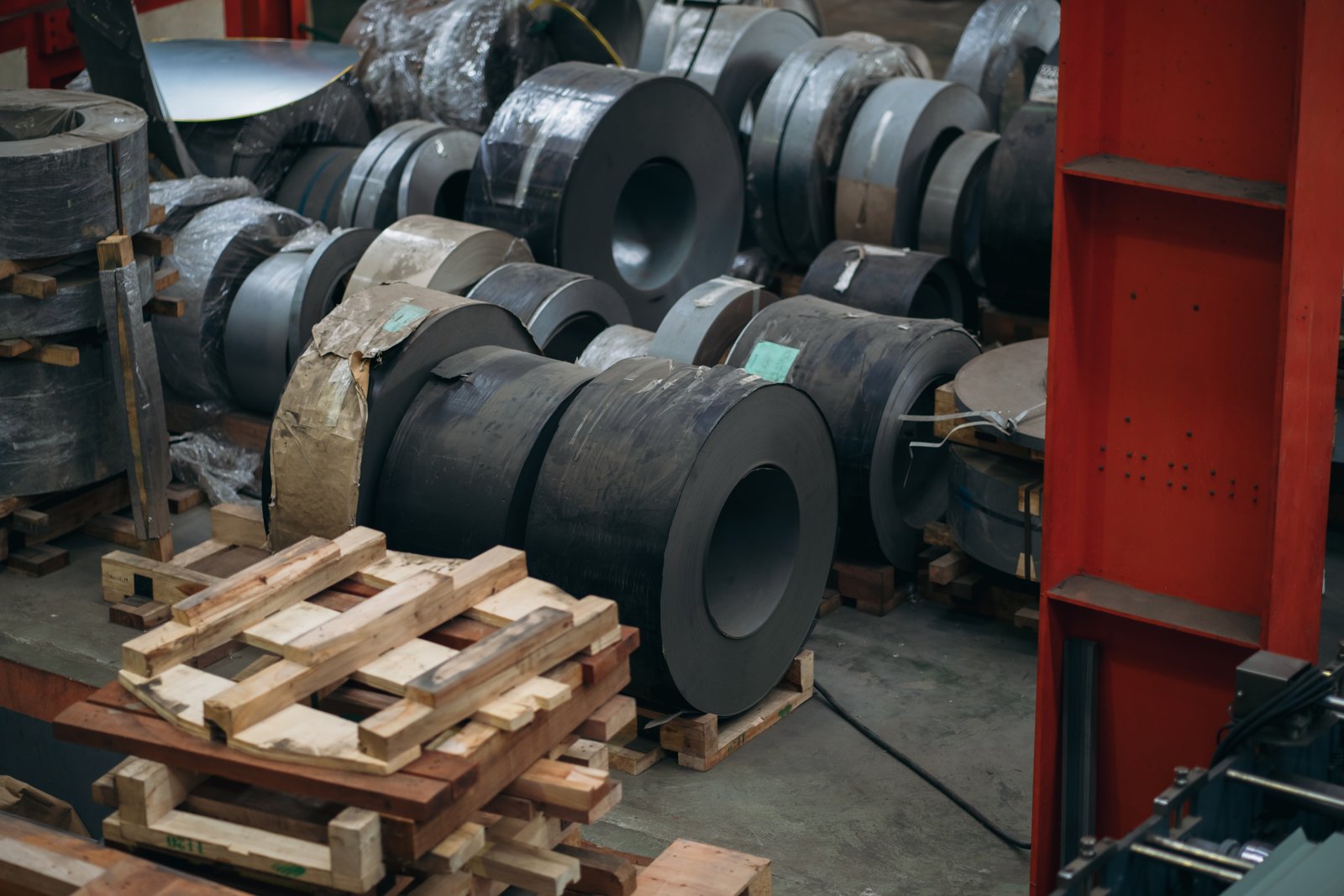
The future of stainless steel coil strip usage will be defined by technological advancements that enhance its intrinsic properties, streamline its application, and improve its environmental footprint. The focus is shifting from steel as a passive material to an active component in a larger technological ecosystem. For users of stainless steel, from manufacturers to construction firms, staying abreast of these improvements is not just an academic exercise; it is a strategic imperative. These innovations promise to unlock new design possibilities, improve product lifecycle value, and meet the growing demand for sustainable solutions. At MFY, we are actively investing in and contributing to these advancements, positioning ourselves and our clients at the forefront of the industry.
Smarter and Stronger: The Next Generation of Alloys
The foundational technology of stainless steel is the alloy itself, and metallurgical innovation continues to be a primary driver of improvement. The future lies in the development of materials with superior performance-to-weight ratios and enhanced resistance to specific environmental challenges. One of the most promising areas is the refinement of duplex and super-duplex stainless steels. These grades, with their mixed austenitic-ferritic microstructure, offer twice the strength of conventional austenitic steels (like 304 and 316) along with exceptional resistance to chloride stress corrosion cracking, making them ideal for demanding applications in the oil and gas, chemical processing, and desalination industries.
Furthermore, research is intensifying on the targeted addition of elements like nitrogen and manganese to create new families of high-strength, nickel-free or low-nickel austenitic steels. This not only addresses the cost volatility and supply chain risks associated with nickel but also opens up new applications. For example, high-nitrogen stainless steels are being developed for medical implants due to their excellent biocompatibility and high strength, and for structural components in the transportation sector where lightweighting is critical for fuel efficiency.
We recently partnered with a research institute to test a new lean duplex grade for a client who manufactures heat exchangers. The new alloy offered 90% of the corrosion resistance of the much more expensive Grade 316L but with a 50% higher yield strength. By using this advanced material, the client was able to redesign their product with thinner walls, reducing the total weight by 20% and the material cost by 15%, all while maintaining the required service life. This is a clear example of how alloy innovation directly translates to a competitive advantage.
The Digital Thread: AI, IoT, and Supply Chain Integration
The way users interact with and manage their steel inventory is poised for a technological revolution. The concept of the "digital thread" is emerging, where data is attached to the physical material throughout its lifecycle. One suggested improvement is the integration of low-cost Internet of Things (IoT) sensors7 or advanced QR codes directly onto the steel coils. This would allow for unprecedented traceability. A user on a factory floor could scan a coil and instantly access its full material certificate, processing history, and optimal machine settings, eliminating manual data entry and reducing errors.
Building on this, Artificial Intelligence (AI) will play a crucial role in optimizing material usage. AI-powered design software, known as generative design, can already create highly optimized part geometries that use the minimum amount of material necessary to meet performance specifications. When this software is fed with the precise properties of a specific coil of steel (retrieved via its digital thread), it can generate designs that are not only lighter and stronger but also tailored to the unique characteristics of the exact material being used.
Imagine a manufacturer of automotive components. Their AI-driven system receives a JIT delivery from MFY. By scanning the coil, the system retrieves its exact tensile strength and formability data. The stamping press's parameters are automatically adjusted, and the part's design is subtly tweaked by the software in real-time to account for this specific coil's properties. This level of integration would lead to a dramatic reduction in scrap rates, improved part consistency, and a highly efficient, autonomous production cell. This is the future we are moving towards.
The Green Coil: Sustainable Production and Lifecycle Management
Perhaps the most significant long-term technological shift will be the drive towards sustainability. The steel industry is traditionally energy-intensive, and there is immense pressure to reduce its carbon footprint. The most promising technological improvement in this area is the shift towards "green steel" production8. This involves using green hydrogen instead of coking coal as the reductant in the iron-making process, which emits water as a byproduct instead of CO2. While still in its early stages, this technology has the potential to decarbonize the industry.
Another key area is enhancing the circular economy for stainless steel. Stainless steel is already 100% recyclable without loss of quality, but improving the efficiency of scrap collection, sorting, and reuse is a critical technological challenge. Advanced sorting technologies using X-ray fluorescence (XRF) analyzers can rapidly identify the composition of scrap, allowing for the creation of high-quality, grade-specific recycled feedstock. This9 reduces the need for virgin raw materials, saving energy and natural resources.
| Technological Improvement | Area of Impact | Key Benefit for User |
|---|---|---|
| Advanced Alloys (e.g., Duplex) | Material Performance | Higher strength-to-weight ratio, superior durability |
| IoT/Digital Thread | Supply Chain & Manufacturing | Real-time traceability, error reduction, process automation |
| AI in Design (Generative) | Product Design & Efficiency | Optimized material usage, lighter/stronger parts |
| Green Steel Production | Sustainability & Environment | Reduced carbon footprint, improved corporate social responsibility |
At MFY, we are actively exploring ways to increase the percentage of certified recycled content in our products and investing in energy-efficient upgrades to our facilities. We believe that providing our clients with a high-performance product that also has a lower environmental impact will be a defining feature of the next generation of steel usage. The future is not just about stronger steel, but smarter and greener steel.
Duplex steels offer twice the strength of 304True
Duplex stainless steels have a mixed microstructure that provides approximately double the yield strength of standard austenitic grades like 304.
Nickel is essential for all stainless steelsFalse
New high-nitrogen, nickel-free austenitic steels are being developed, proving nickel isn't mandatory for corrosion resistance.
Conclusion
Stainless steel coil strip has evolved from a historical novelty to a versatile, high-tech cornerstone of modern industry. Overcoming production challenges through supply chain integration and technological innovation is paramount. MFY is committed to leading this charge, delivering the quality and reliability that empowers our global partners.
-
Understand the impact of raw material quality on finished product integrity and safety. ↩
-
Discover various sectors utilizing stainless steel coils for unique solutions ↩
-
Learn about stainless steel's role in enhancing architectural durability and aesthetics ↩
-
Understand stainless steel's advantages in formability and resistance in consumer goods ↩
-
Learn how precision engineering impacts the suitability of stainless steel for laser cutting applications. ↩
-
Discover risk management techniques that stabilize costs in volatile markets ↩
-
Explore IoT applications for real-time data and inventory management in steel manufacturing. ↩
-
Understand the role of hydrogen in reducing carbon emissions in steel production. ↩
-
Find out how advanced sorting technologies help create quality recycled steel products. ↩
Have Questions or Need More Information?
Get in touch with us for personalized assistance and expert advice.

